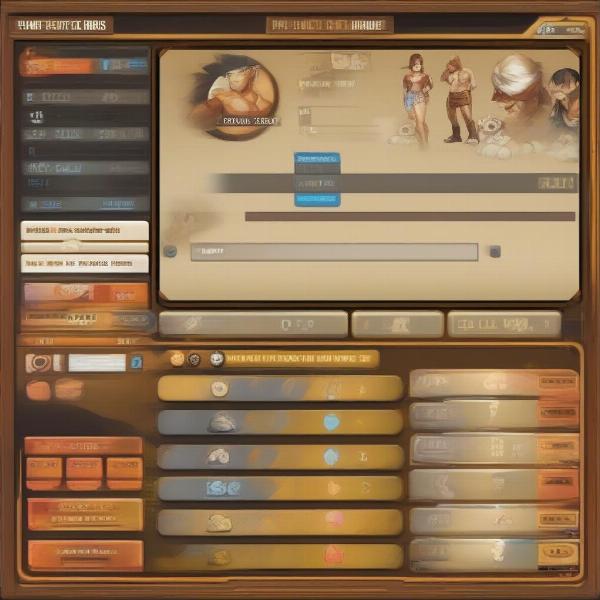Creating your own fighting game is an exciting way to dive into game development, and Scratch offers a user-friendly platform to do just that. Whether you’re a beginner or have some coding experience, this guide will walk you through the process of building a dynamic and engaging fighting game on Scratch. We’ll cover everything from character design and movement to combat mechanics and scoring. Get ready to unleash your creativity and bring your fighting game vision to life!
Planning Your Fighting Game
Before you start coding, it’s crucial to plan your game. Consider the genre, characters, gameplay mechanics, and overall aesthetic. Are you creating a classic arcade-style brawler or a more complex fighting game with special moves and combos? Defining these elements will provide a roadmap for your development process. Think about the number of characters, their unique abilities, and the background environment. A well-defined plan will streamline the creation process and help you stay organized.
Creating Your Characters
Scratch’s built-in sprite editor allows you to design your fighters or import custom artwork. Give each character distinct looks and animations for actions like walking, punching, kicking, and blocking. Consider using different costumes within a sprite to represent these animations. This will add a dynamic and engaging visual element to your fighting game.
Implementing Movement and Controls
Use Scratch’s motion blocks to control your characters’ movement. Assign specific keys for each character to move left, right, jump, and crouch. You can achieve smooth movement by adjusting the character’s x-position with the “change x by” block. Experiment with different movement speeds to find what feels best for your game.
Building the Combat System
The core of your fighting game lies in its combat mechanics. Use sensing blocks to detect collisions between characters when attacks are launched. When a hit connects, reduce the opponent’s health using variables. Create different attack types, such as punches and kicks, by assigning unique damage values and animations to each.
 Scratch Fighting Game Combat System Design
Scratch Fighting Game Combat System Design
Adding Special Moves and Combos
To enhance the gameplay, consider adding special moves and combos. These could be executed by pressing specific key combinations. For example, a character might perform a powerful uppercut by pressing the up arrow key and the punch button simultaneously. These additions will add depth and complexity to your fighting game.
Incorporating Health and Scoring
Use variables to track each character’s health. Display these values on the screen so players can see how much damage they’ve taken. Implement a scoring system to track wins and losses. You can even create a leaderboard to add a competitive element.
 Scratch Fighting Game Health and Score Display
Scratch Fighting Game Health and Score Display
Refining and Testing Your Game
Once the core mechanics are in place, it’s essential to test and refine your game thoroughly. Play through the game yourself and identify any bugs or areas that need improvement. Get feedback from others to gain valuable insights. This iterative process will help you polish your fighting game and ensure it’s enjoyable and balanced.
Adding Backgrounds and Music
Enhance the visual and auditory experience by adding backgrounds and music. Scratch offers a library of pre-made backgrounds or you can create your own. Choose music that complements the game’s theme and adds to the excitement.
Sharing Your Fighting Game
Once you’re satisfied with your game, share it with the Scratch community! This allows others to play your game and provide feedback. It’s also a fantastic way to learn from other creators and get inspired by their projects.
 Scratch Fighting Game Sharing and Project Page
Scratch Fighting Game Sharing and Project Page
Advanced Techniques: Level Design and AI Opponents
As you become more proficient with Scratch, you can explore more advanced techniques. Design multiple levels with varying backgrounds and challenges. Implement basic AI for computer-controlled opponents to add replayability to your game.
FAQs: How to Make a Fighting Game on Scratch?
What is the easiest way to create a fighting game on Scratch?
Start with basic movement and combat mechanics. Focus on building a solid foundation before adding more complex features.
How do I make a fighting game with multiple characters on Scratch?
Create each character as a separate sprite and implement individual movement and attack scripts for each.
Can I create a fighting game with online multiplayer on Scratch?
Scratch does not directly support online multiplayer. However, you can create a local multiplayer game where two players can play on the same computer.
How do I add special moves to my Scratch fighting game?
Use specific key combinations to trigger special moves. Assign different animations and damage values to these moves.
What are some good resources for learning Scratch game development?
The Scratch website itself offers tutorials and examples. There are also numerous online communities and forums where you can learn from other Scratch creators.
How can I make my Scratch fighting game more challenging?
Implement AI opponents with varying difficulty levels, or create multiple levels with increasing challenges.
Where can I share my finished Scratch fighting game?
Share your game on the Scratch website to allow others to play and provide feedback.
Conclusion
Creating a fighting game on Scratch is a rewarding experience. By following this guide and unleashing your creativity, you can bring your fighting game vision to life. Remember to plan your game, design engaging characters, implement effective combat mechanics, and continually test and refine your project. Now, go forth and create your epic fighting game on Scratch!

